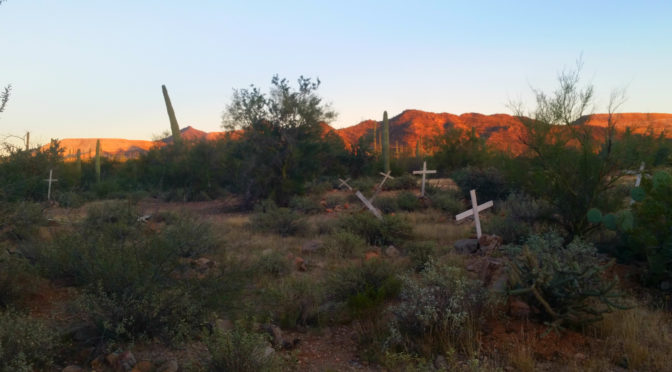“You can’t call somebody dead who struggles for life.” —Anonymous
There is no easy way to write about this. The words when put side by side are shrill. A keen.
Recovering. Human. Remains.
How does one “recover” another who is dead? Another whose body parts are strewn about, blanched, clotted with dirt, or even intact, sun-seared and gray?
“Humans,” even in death, shouldn’t look like this.
Sometimes I go into work mode. I become methodical. Set up a grid search. Mark a GPS waypoint. Take photos and . . . and, and, and . . . And yet here or nearby is where someone took their last choking, sun-racked breath.
“Remains”: a euphemism. This is what’s left. What wasn’t eaten, or dragged off by coyotes or ravens, or buried in monsoon mud.
A being is reduced to a statistic. A what, rather than a who . . .
Who lived inside this skull anyway? What were their last thoughts? Who is their mother? Lover? Did they have children? Does anyone who loved them know their fate? Why did they come this way? Will I ever get used to this part of the work? Do I want to?
And yet, can I stop? When I encounter some-body, I re-encounter myself. The living meets the dead. And stops me. Cold. Even at 115 degrees.
Sometimes I go into work mode. I become methodical. Set up a grid search . . . to look for more body parts, more of who this Juan or Juanita Doe was. Mark a GPS waypoint. Take photos. Call the sheriff’s office. Mark the area with bright tape and . . . and, and, and . . .
And yet here or nearby is where someone took their last choking, sun-racked breath.
Sometimes I just sit down in the deep stillness. Paralyzed in the moment. Looking death in the face, or more accurately, in the eyeless skull. Looking into the maw of needless death. Premeditated death. Death by policy. Murder.
My intellect and my emotions collide. And I’m pushed deeper into that dark, dank internal cavern where the query “why” bangs off the walls. And shatters the stillness.
There is no easy way to write about this. How can you call somebody dead who struggled for life?
This piece was written by John Heid, a No More Deaths volunteer who lives in Ajo, Arizona.

